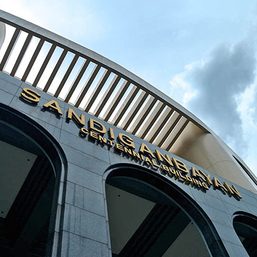SUMMARY
This is AI generated summarization, which may have errors. For context, always refer to the full article.

The Department of Energy (DOE) said on Thursday, July 1, there is a “big probability” that electricity prices could increase when the Malampaya gas field goes offline in October.
In the Senate hearing on power supply shortages, Senator Nancy Binay asked the DOE about the possible impact of Malampaya’s scheduled maintenance in the fourth quarter.
The Malampaya gas field is said to be going under preventive maintenance from October 2 to 22. Over 3,200 megawatts of power supply in the Luzon grid could be affected.
Energy Undersecretary Felix Fuentebella explained that gas-fired plants address their needs by using condensate, a type of liquid fuel, which is more expensive.
While Fuentebella said the situation alone would not necessarily push prices up, he added: “That’s just one factor that may affect the bill. There are other factors that affect the bill.”
“But there’s a big probability that there’s an increase.”
There are fears that Malampaya’s temporary shutdown could lead to blackouts, given that huge capacity would be lost.
Earlier, House Deputy Minority Leader Carlos Zarate warned that since the DOE has moved the shutdown schedules of some plants, these could spill over to Malampaya’s maintenance time frame.
Throwback to 2013?
Senator Risa Hontiveros on Thursday brought up that in 2013, the Manila Electric Company (Meralco) had raised rates by a total of P4.15 per kilowatt-hour due to a Malampaya shutdown.
The Supreme Court stopped Meralco’s rate hike, as allegations of market abuse were floated at the time.
Energy Regulatory Commission Chairperson Agnes Devanadera told senators that such a steep hike may be unlikely this time, given that policies were already implemented as a result of the 2013 incident.
“The 2013 and present-day situations are very different. Because now, we are talking of secondary cap that kicks in after sustained high prices for five days,” said Devanadera.
She added that the rule on the secondary price cap was changed so that it could be imposed from the earlier five days to only three days of sustained high prices at the Wholesale Electricity Spot Market (WESM).
Earlier during the hearing, Devanadera also said a technical working group in the ERC is looking at the relationship between plants that were on outage vis-à-vis plants that gained from the shutdown.
Philippine Independent Power Producers Association president Anne Montelibano reiterated on Thursday that no plants “would want to shut down” because that would mean foregone revenues.
On the issue of collusion, Developers of Renewable Energy for Advancement president Jay Layug said it could not be possible under the current spot market system. Layug is a former chairman of the National Renewable Energy Board.
Right now, WESM has started transitioning to a five-minute trading interval, which Layug said would make it difficult to collude with other players.
“Kung tayo ay magko-collude, magtatawagan po kami every five minutes (If we were colluding, we would have to call each other every five minutes).… It does not make sense operationally,” Layug said. – Rappler.com
Add a comment
How does this make you feel?


![[ANALYSIS] The Reed Bank gaffe and misunderstanding Malampaya](https://www.rappler.com/tachyon/2023/05/The-Reed-Bank-Gaffe-and-Misunderstanding-Malampaya.jpg?resize=257%2C257&crop=271px%2C0px%2C720px%2C720px)
![[OPINION] Malampaya plus 15: A tale of the lesser evil](https://www.rappler.com/tachyon/2023/05/imho-malampaya-lesserevil.jpg?resize=257%2C257&crop=286px%2C0px%2C720px%2C720px)

There are no comments yet. Add your comment to start the conversation.